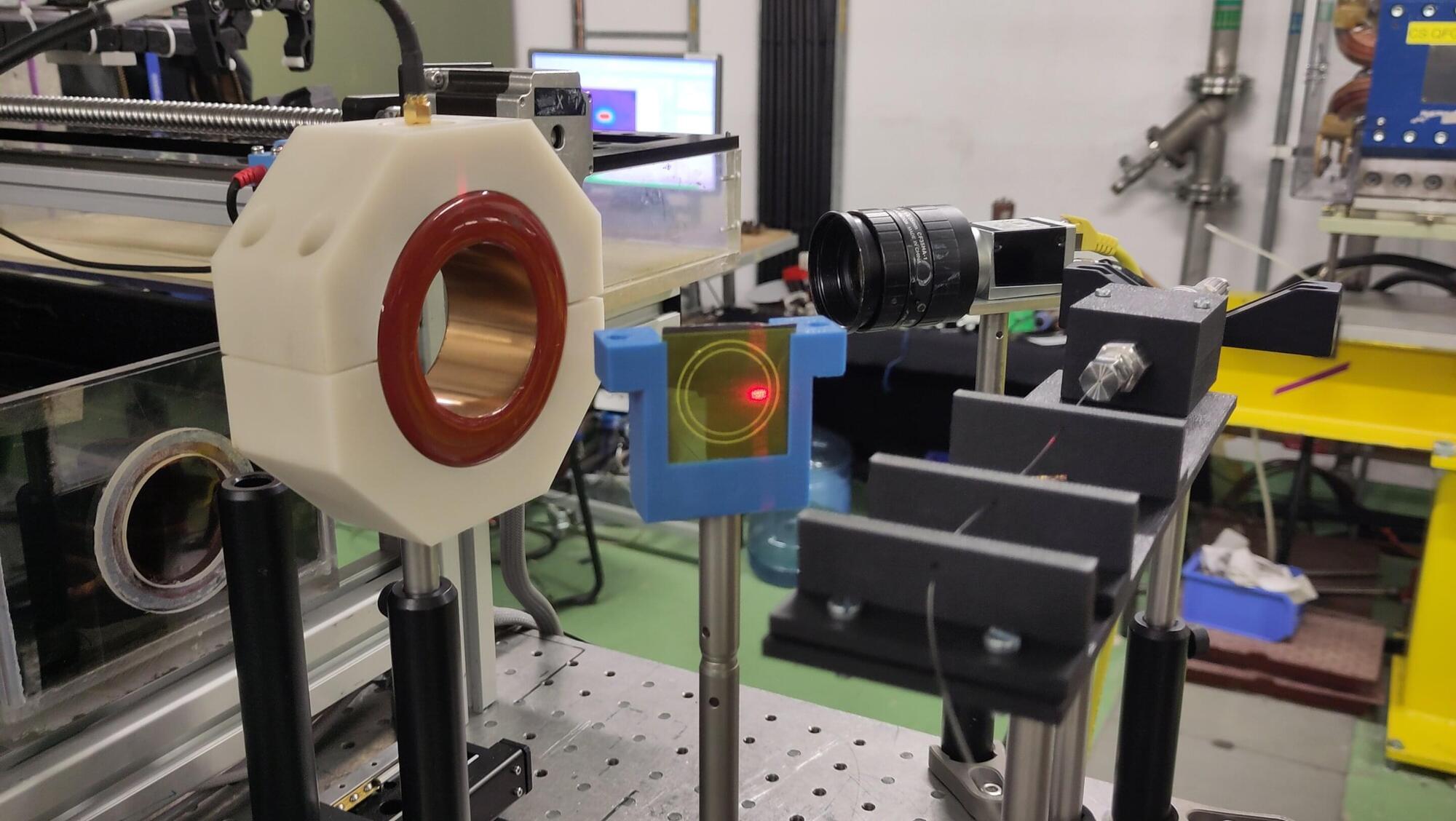A slender glass fiber no thicker than a human hair placed across a particle beam could improve accelerator monitoring. A team is testing the use of hollow-core optical fibers to measure the profile and position of the beams extracted from the Super Proton Synchrotron, CERN’s second-largest accelerator, which feeds the experiments located in the North Area.
Unlike conventional fibers, which guide light through solid glass, hollow-core optical fibers are mostly empty inside but have a microstructure design that guides light through resonance–antiresonance effects on the electromagnetic field.
By filling these fibers with a scintillating gas—a gas that emits tiny flashes of light when struck by particles—scientists can create a simple yet powerful radiation sensor that helps them to adjust the beam profile and position and may even allow them to measure the delivered beam dose in real time.
